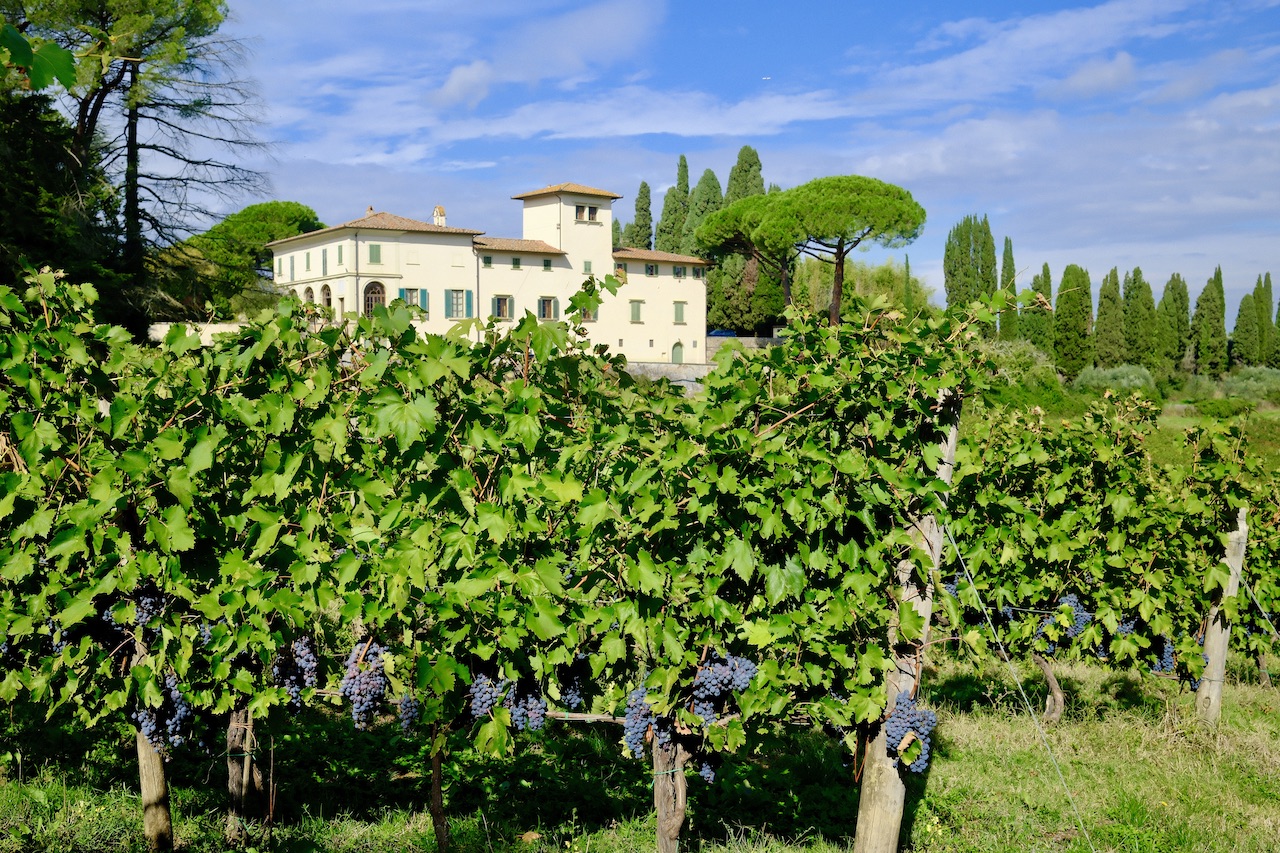Wine Tours in Tuscany - About Angie - +39 3333185705 - angie.chianti@gmail.com
This second-part series takes an in-depth look at some more of Chianti’s most magnificent country castles that evoke a fascinating medieval atmosphere. Standing proud on a hill overlooking wonderful landscape and majestic vineyards, the castles of Chianti include some of the oldest and most well-known medieval estates in Tuscany.
– Castello di San Donato in Perano
Located between Radda and Gaiole in Chianti among 360 hectares of vineyards, this castello sits atop a hill overlooking beautiful countryside and, in the distance, Monte Amiata. From the castle one can even spot some other castles of Chianti, among which the renowned Castello di Brolio. Castello di San Donato in Perano was first built as hamlet and it dates back to the 10th century. It comprises of a church along with several other buildings.
– Castello di Meleto
Not far from Gaiole in Chianti is another favourite destination for wine lovers, Castello di Meleto. The castle sits among more than 2000 acres of land, of which a large part is dedicated to vineyards. This castle of Chianti first belonged to the Coltibuono Abbey Benedictine monks. It was then named Meleto at a later stage, more precisely when it became a possession of the Rainerii de Ricasolis family who extended the building and carried out the conservation of the castle over the centuries. Castello di Meleto consists of massive fortifications dating back to the fifteenth century, an imposing cylindrical tower, as well as a private picturesque 18th-century theatre.
– Castello di Vertine
First mentioned in 1013, castello di Vertine is yet another castle of Chianti which has an idyllic setting in the gentle hills of the Monti del Chianti region. This medieval jewel belonged to the Ricasoli family and their onwnerships persisted over time. Luckily enough, the conflicts for the control over the Chianti region between Florence and Siena did not affect the castle during their battling in the Middle Ages time. Castle of Vertine is an outstanding example of a fortified manor house with defensive walls, an impressive tower and a small square. Such a square hosts the beautiful Church of San Pietro where the magnificent works by Lorenzo di Bicci and Duccio di Buoninsegna are housed.
– Castello di Vistarenni
This wonderful Renaissance mansion – dating back to 1033 – is located in the heart of the Chianti region, between Radda and Gaiole in Chianti. Today the villa is considered an official historical monument and cultural heritage. This castle of Chianti lost its medieval appearance in the XV and XVI centuries when fortresses and hamlets were converted into mansions. All around the estate are over 296 acres of land and beautiful vineyards dedicated to the production of Chianti Classico.
– Castello of Lucignano
Not far from Siena, nestled in the hills of the prestigious Chianti Classico region of Tuscany, is Castello of Lucignano. This Castle of Chianti is surrounded by idyllic and charming vineyards and olive trees. The origins of the castle go back to the Etruscan and Roman times; a Roman wall is part of the old wine cellar. Over time, precisely in the XV century, the castle was converted into a mansion.
– Castello di Montefioralle
Concluding this second-part series is Castello di Montefioralle, an ancient village which is located close to Greve in Chianti, approximately 30 km south of Florence. Its original name, i.e. Monteficalle was very likely referring to the fig trees that grow around the castle. Also, all around are vineyards stretching away in every direction. This castle of Chianti retains a lot of charm and still has its original walls surrounding the medieval village. In the past, Castello di Montefioralle was a military but also a main trading hub of the Chianti region. Interestingly enough, number 21 on the village main street is, allegedly, the birth house of Amerigo Vespucci, a merchant and explorer who discovered the north-eastern coast of South America.





